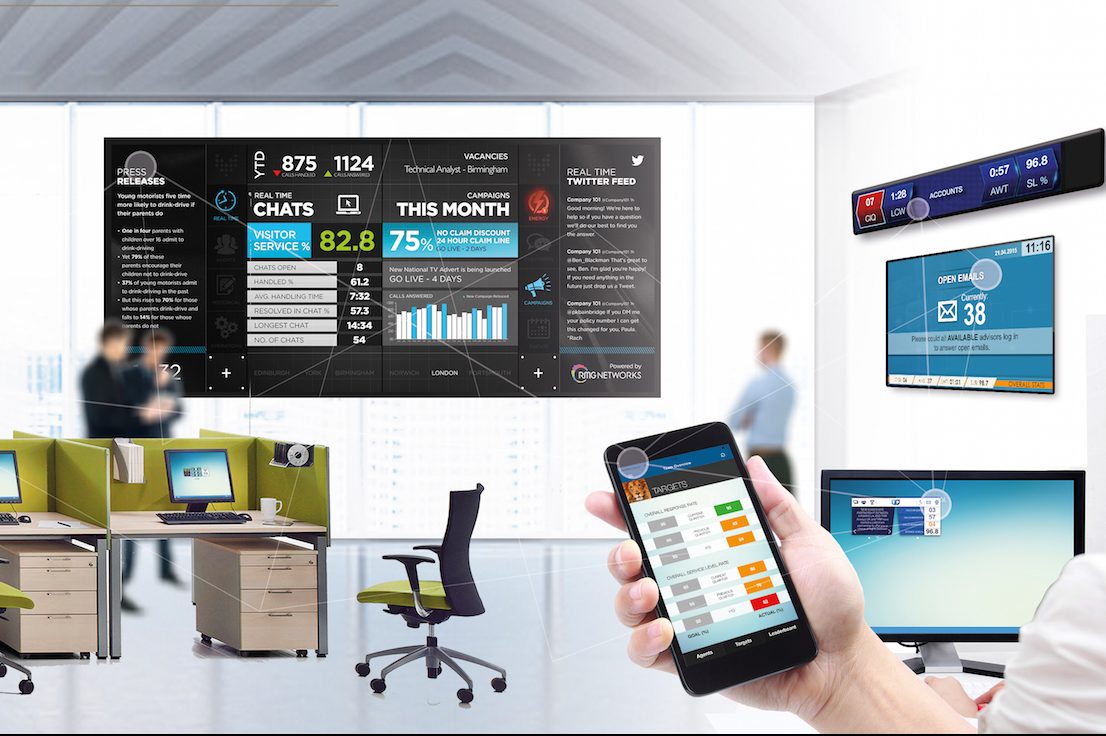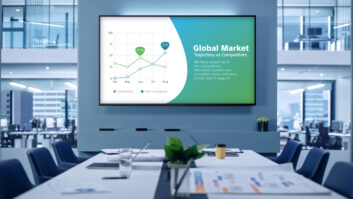
Martyn Barnett, managing director at RMG Networks, provides practical tips for both corporate and retail digital signage.
In an extremely concentrated retail environment, it’s more important than ever for high-street retailers to create an environment to build brand loyalty where consumers not only feel engaged, but persuaded or influenced to purchase. One way that many retailers are looking to establish an engaging environment and improve the consumer experience is through digital signage.
Similarly, intelligent digital signage is becoming an increasingly popular way to engage employees within a business. Displaying sales targets, transaction performance, customer satisfaction scores and other real-time data in a meaningful way and then targeting the delivery of the information so that it is relevant and actionable by employees to influence behaviour, drive performance and help employers manage performance, productivity and engagement.
But how can retailers and employers alike ensure that their digital signage strategies are accomplishing their mission? Here are the dos and don’ts:
– DON’T think of digital signage as just the delivery of content to a screen. Instead, think of how the data is being delivered and segmented in a way that makes it specific and targeted to when and where action can be taken – such as doing something, or buying something.
– DON’T think that a screen is just something that hangs on the wall. Instead, think of a screen as being part of a diverse family of multi-platform technologies such as mobile phones, tablets, screens and videowalls, that can all display homogeneous intelligent content from a single powerful CMS.
– DON’T think that interactivity is just something that happens from a protruding index finger or a waving arm. Instead, consider how Generation Z contributes via two thumbs into the social spectrum. Make sure that interactivity includes social media platforms such as Twitter, Instagram, Yammer, Facebook and so on.
– DON’T implement without a clear strategy. It’s tempting to buy technology and dive-in, but success comes when an organisation defines its objectives and plots out a tactical implementation plan well in advance of deploying hardware and setting up data retrieval and distribution systems. Make sure to design a communication or campaign strategy with help from experts in acquiring and aggregating data and information. From there you can build content and messages that really engages and influences behaviour so that action is taken when and where it matters most, whether that means doing something, or buying something.
– DON’T lock into one technology. One eye should always be on the future of digital hardware and software technological development. Digital technology is advancing at a rapid pace; what’s in the lab today may be popping up in your competitor’s store or call centre within months. Don’t allow your business to fall behind.
– DON’T think that technology alone will solve all your problems. It won’t. Consult with the experts about the full turnkey solution, even including coaching in your business for engagement and communication strategies. Always think of the investment as a long-term strategy, and never a quick fix purchase.
– DON’T forget to have your solution properly and professionally supported. Technology can, and will fail. Users can, and will do things wrong. Networks can, and will cause unpredictable results. Ensure you invest in a fully managed service where you can benefit from continuous monitoring with both remote and onsite care plans.
– DO display user-generated content whenever possible. Moderated customer reviews and positive employee contributions instil confidence, build brand advocacy and turn browsers into buyers. People are influenced by content from their peers much more than they are influenced by marketing machines, or by corporations. It’s about involving customers in the plan. The same goes for employees. Ivory tower strategy and deployment decisions create disconnects between real world issues and leadership perception of those issues. Keep employees engaged with surveys, small group meetings, online feedback requests, etc. It’s about creating a two-way immersive and engaging communication.
– DO use intelligent techniques that are proven to influence behaviour – such as gamification and alert based resolution messaging. Make it more than just interactive – make it playful. Whether aimed at customers or employees, gamifying results in people paying more attention to the information.
– DO review your progress regularly. A clear strategy includes KPIs so that progress can be charted effectively. Is your digital communication plan working? Organisational leaders should always have a clear answer to that question; in fact, this is a major KPI of any contact centre or retail digital signage strategy. So make sure that you are incorporating data and analytics technologies and expertise into your strategy so that campaigns can be measured, adjusted and continuously improved.
– DO make sure your content management system (CMS) is both powerful and scalable for all your current and future aspirations. Make sure your system is easy to use and highly intuitive. Make sure you have great options from SaaS to OnPremise and Capex to Opex. Subscription to Perpetual.







